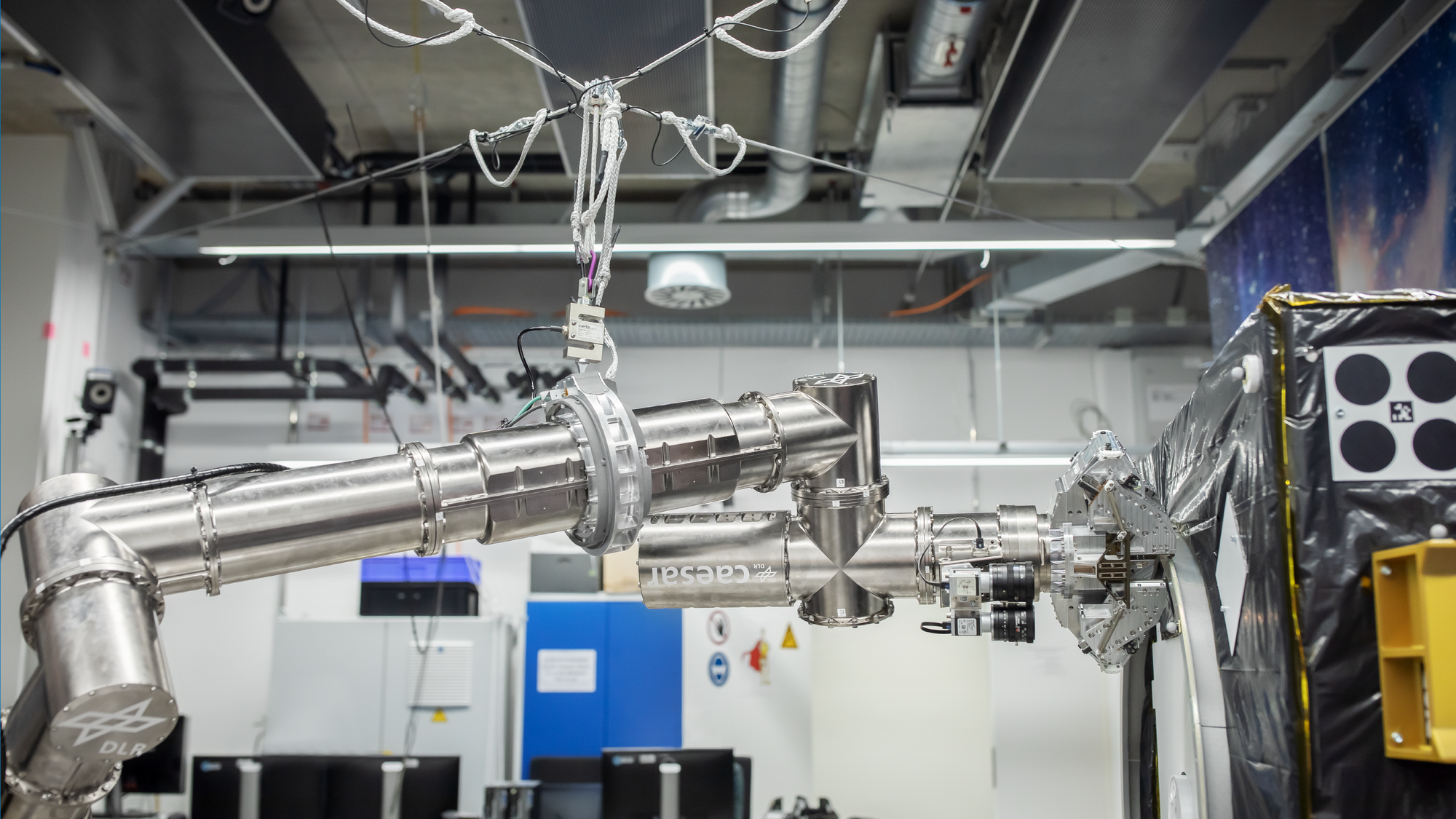EROSS+: Demonstration on satellites
For a final demonstration of the European project EROSS+, scientists from the Institute of Robotics and Mechatronics demonstrated the capture, maintenance and assembly of a satellite in orbit on January 26 and 27, 2023. In the process, the robotic CAESAR arm gripped a satellite in motion at the institute's research laboratory in Oberpfaffenhofen.
Satellites have a limited service life and incur high costs. On-orbit servicing (OOS) can extend the service life by performing maintenance or repairs on site in space. DLR is developing robots that intervene specifically on site, thus making valuable resources usable. This reduces costs for operators.
The EU-funded EROSS+ space project developed the mission concept for this demonstration, which covers the entire rendezvous phase of a collaborative/non-collaborative customer satellite, including capture, performing maintenance and an assembly in low-Earth orbit. Together with four industrial partners from France, Spain, Poland and Italy, the groundwork for an on-orbit servicing demonstration mission was developed.
The project is an European solution that addresses the highest priority commercial and institutional market needs. It has built on key robotic technologies funded in recent years by the European Commission (H2020), the European Space Agency (ESA) and national agencies. EROSS+ strengthens the competitiveness of the European space industry, which is facing a global paradigm shift.
In addition to technical enhancements, the project covered phases 0, A, B1 for the on-orbit servicing mission, including mission and feasibility analysis and preliminary definition of all components. DLR was responsible for the robotic technologies within the project, with the CAESAR arm to be used as a robotic manipulator for the planned mission. For this purpose, the project integrated a gravity compensation system (MSS) for CAESAR to demonstrate and verify the complete robotic subsystem and its functionalities such as gripping an adapter ring, manipulation and assembly under 1g conditions.
The EROSS+ project will seamlessly transition into its successor project EROSS IOD. It is funded under the European Union's new Horizon Europe framework program for research and innovation. In an expanded consortium, it builds directly on the results of EROSS+ and will proceed through phases B2, C.

